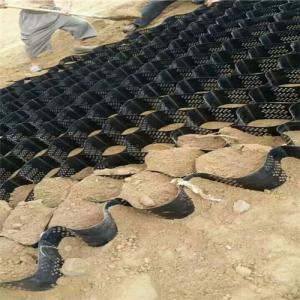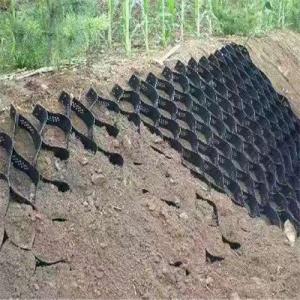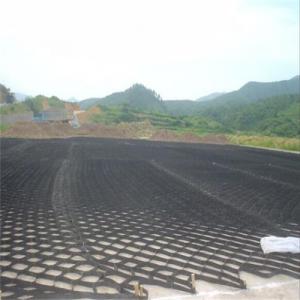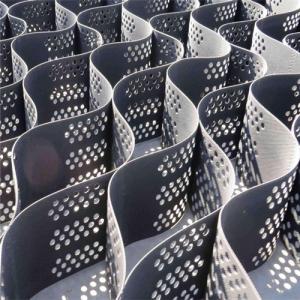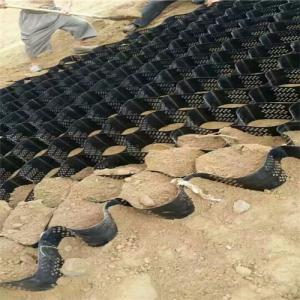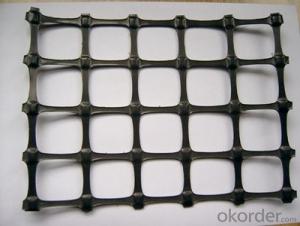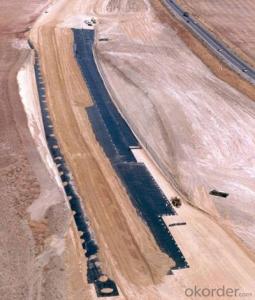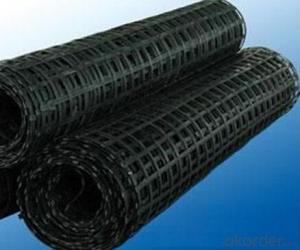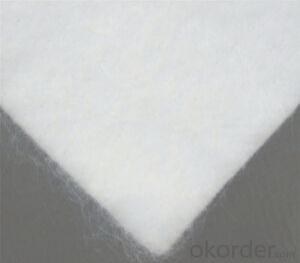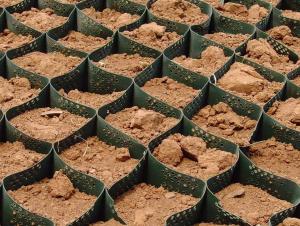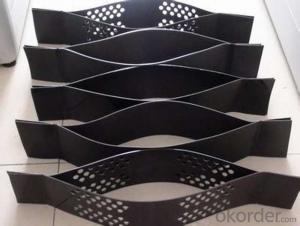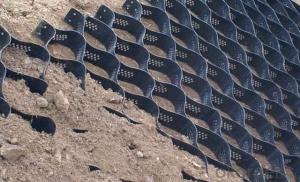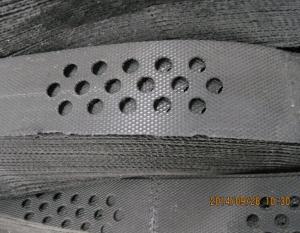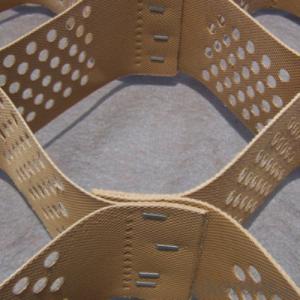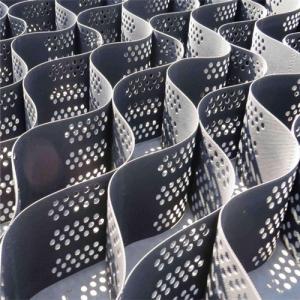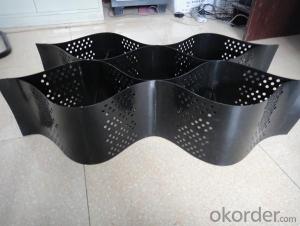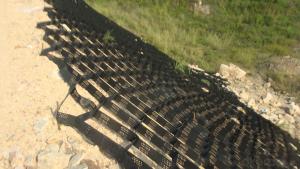HDPE Geocell for Road Reinforcement with Different Welding Distance
- Loading Port:
- China main port
- Payment Terms:
- TT or LC
- Min Order Qty:
- 10000 m²
- Supply Capability:
- 5000000 m²/month
OKorder Service Pledge
OKorder Financial Service
You Might Also Like
Geocell Description
Geocell is high-molecular polymer, connected by rivets or ultrasonic welded to three-dimensional network structure, unfold it and fill in sand, gravel and clay, etc. when used at construction site.
According to customer’s requirement, cut holes or carve arabesquitic in order to increase its lateral permeable ability, also increase the friction and binding force with the foundation material.

Geocell Specification
Welding distance:330-1000mm
Height:50-250mm
Surface: Textured or Smooth
Color: black,brown,green
Geocell Property:
1) Retractile, foldable when transportation, pulled to net work when construction, fill in the soil, gravel, concrete, atc. Loose materials,
form one structure with strong lateral limitations and high stiffness.
2) Material is light, abrasion resistance, chemical properties stable, resist photooxidation aging, acid and alkali resistant, suitable for different soil and soil conditions, such as desert.
3) Good lateral restrict and prevent slippery, prevent deformation, effectively enhance the bearing capacity of subgrade and dispersed
loads function.
4) The geocell height and welding distance etc. geometric dimensions are all changeable in order to meet the requirement of different projects.
5) Capable and easily be expanded or contracted, small size for transportation, easy for connect and construction speed is fast.
Geocell Application
1) Used for the stability of railway road.
2) To stabilize the desert highway road.
3) Used in the governance of shallow water channel.
4) Used for the foundation reinforcement of retaining wall, wharf, levee.
5) For the management of desert, beaches and river banks
- Q:Are geocells resistant to erosion caused by wave action?
- No, geocells are not inherently resistant to erosion caused by wave action. However, they can be used as a part of erosion control measures in coastal areas to help mitigate the effects of wave action.
- Q:Can geocells be used in mining pit wall stabilization?
- Yes, geocells can be used in mining pit wall stabilization. Geocells are cellular confinement systems made from high-density polyethylene (HDPE) and can be filled with various materials such as soil, aggregate, or concrete. These cells provide structural support and stability to the pit walls, preventing erosion, slope failure, and landslides. Geocells are cost-effective, easy to install, and can withstand heavy loads, making them suitable for mining pit wall stabilization.
- Q:Are geocells compatible with geotextiles?
- Yes, geocells are compatible with geotextiles. Geocells are three-dimensional cellular structures made from high-density polyethylene (HDPE) or other materials and are often used for soil stabilization and erosion control. Geotextiles, on the other hand, are permeable fabrics that allow water to pass through while retaining soil particles. Geotextiles are commonly used in conjunction with geocells to provide additional reinforcement and filtration. They can be placed inside the cells of the geocell structure to prevent soil migration and improve overall performance.
- Q:How do geocells improve the load distribution of pavements?
- Geocells improve the load distribution of pavements by providing a stable and reinforced structure. When filled with compacted infill materials, geocells create a grid-like system that distributes the load from vehicles evenly across the pavement. This reduces the stress and pressure on the underlying soil, preventing uneven settlements and rutting. Additionally, geocells enhance the pavement's ability to withstand heavy loads and increase its overall strength and durability.
- Q:Can geocells be used for landscaping?
- Yes, geocells can be used for landscaping. Geocells are three-dimensional cellular confinement systems that are commonly used for erosion control, slope stabilization, and soil reinforcement in landscaping projects. They provide structural support and stability to the soil, preventing erosion and reducing the risk of landslides. Additionally, geocells can be filled with soil or gravel to create stable and durable surfaces for pathways, driveways, and parking lots in landscaping applications.
- Q:Are geocells suitable for use in floating structures?
- Yes, geocells are suitable for use in floating structures. Geocells are three-dimensional honeycomb-like structures made from high-density polyethylene (HDPE) material. They provide excellent stability, load-bearing capacity, and erosion control, making them ideal for various applications including floating structures such as floating platforms, floating walkways, and even floating homes. Geocells offer buoyancy, durability, and versatility, making them a reliable choice for constructing stable and sustainable floating structures.
- Q:What is the typical installation process for geocells?
- The typical installation process for geocells involves the following steps: 1. Site preparation: The area where the geocells will be installed is cleared of any vegetation, debris, or uneven surfaces. The ground is then leveled and compacted to create a stable base. 2. Geocell layout: The geocell panels are laid out over the prepared area, ensuring proper alignment and orientation. The panels are typically connected using interlocking mechanisms or fastening devices to form a stable grid. 3. Filling the cells: Once the geocell grid is in place, the cells are filled with suitable infill material such as soil, aggregate, or sand. This material is typically poured or spread evenly into the cells, ensuring that they are completely filled. 4. Compaction: After the cells are filled, the infill material is compacted using mechanical compactors or other suitable equipment. This helps to improve the stability and load-bearing capacity of the geocell system. 5. Surface finishing: Once the infill material is compacted, the surface can be finished as required. This may involve grading, additional compaction, or the application of a top layer such as asphalt or gravel, depending on the intended use of the geocell system. 6. Quality control: Throughout the installation process, quality control measures are typically implemented to ensure that the geocells are properly installed and meet the required specifications. This may involve periodic inspections, testing, and verification of installation techniques. Overall, the installation process for geocells is relatively straightforward and can be completed with the help of trained personnel and suitable equipment. It offers a cost-effective and efficient solution for various soil stabilization and erosion control applications.
- Q:How do geocells improve the load-bearing capacity of soils?
- Geocells improve the load-bearing capacity of soils by confining and stabilizing them, creating a stronger and more stable foundation. The interlocked cells in geocells prevent soil lateral movement and enhance soil compaction, effectively reducing settlement and increasing the overall load-bearing capacity of the soil.
- Q:Can geocells be used in wetland restoration projects?
- Yes, geocells can be used in wetland restoration projects. Geocells are a versatile and effective solution for stabilizing soil and managing water flow in various environments, including wetlands. They provide a stable base for vegetation and help prevent erosion while allowing water to permeate through the cells, promoting healthy wetland ecosystems.
- Q:How do geocells improve load-bearing capacity in soft soils?
- Geocells improve load-bearing capacity in soft soils by providing confinement and reinforcement to the soil. The high-density polyethylene cells are filled with compacted soil, which creates a stable and strong foundation. This confinement prevents soil lateral movement and improves shear resistance, allowing the soil to withstand heavier loads without excessive settlement or deformation.
1. Manufacturer Overview |
|
|---|---|
| Location | |
| Year Established | |
| Annual Output Value | |
| Main Markets | |
| Company Certifications | |
2. Manufacturer Certificates |
|
|---|---|
| a) Certification Name | |
| Range | |
| Reference | |
| Validity Period | |
3. Manufacturer Capability |
|
|---|---|
| a)Trade Capacity | |
| Nearest Port | |
| Export Percentage | |
| No.of Employees in Trade Department | |
| Language Spoken: | |
| b)Factory Information | |
| Factory Size: | |
| No. of Production Lines | |
| Contract Manufacturing | |
| Product Price Range | |
Send your message to us
HDPE Geocell for Road Reinforcement with Different Welding Distance
- Loading Port:
- China main port
- Payment Terms:
- TT or LC
- Min Order Qty:
- 10000 m²
- Supply Capability:
- 5000000 m²/month
OKorder Service Pledge
OKorder Financial Service
Similar products
New products
Hot products
Related keywords
